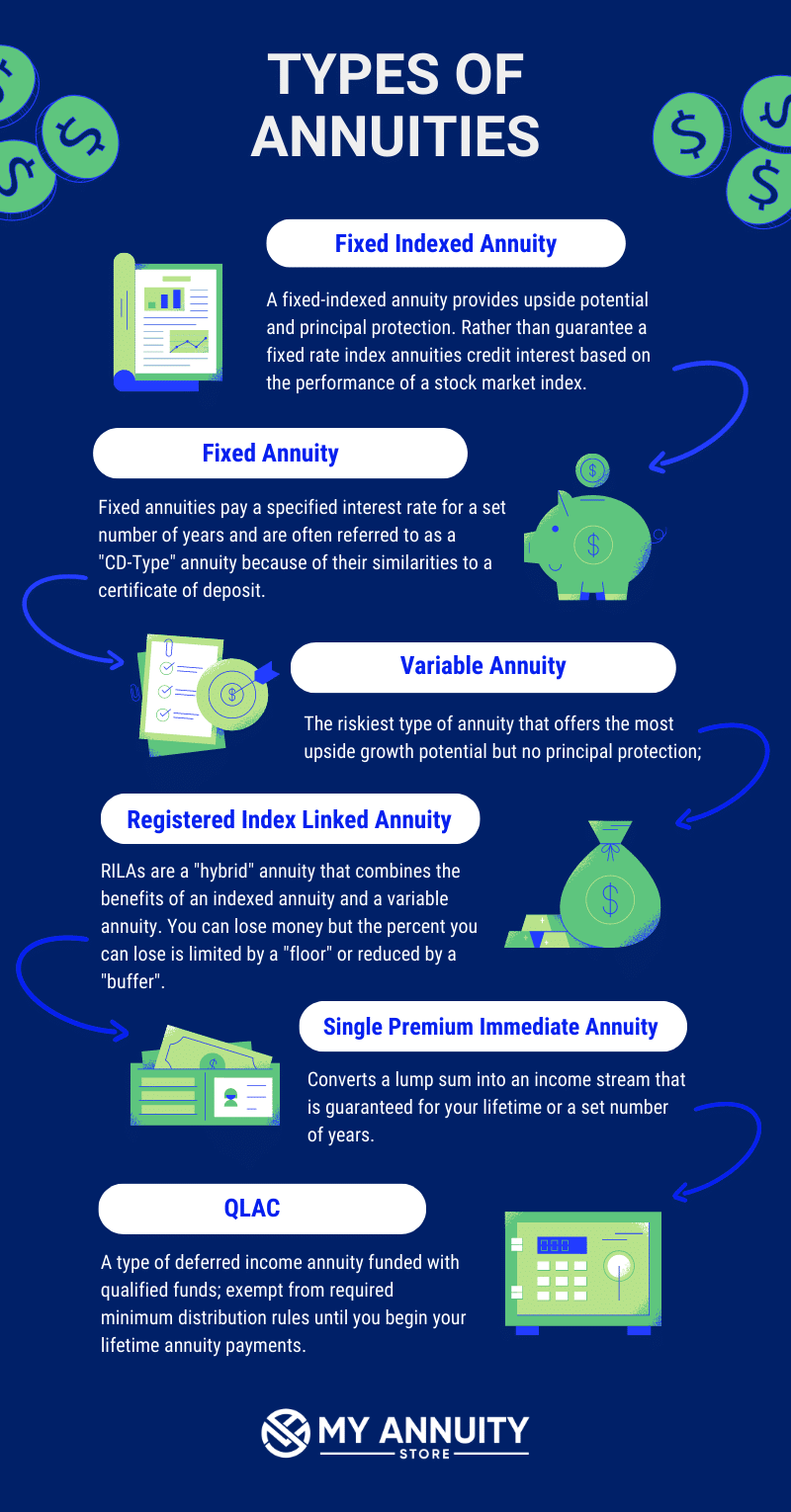All Categories
Featured
Table of Contents
Equally as with a fixed annuity, the owner of a variable annuity pays an insurer a lump amount or series of settlements for the promise of a series of future payments in return. As discussed above, while a fixed annuity expands at an assured, continuous price, a variable annuity expands at a variable price that depends upon the efficiency of the underlying investments, called sub-accounts.

Throughout the build-up stage, properties bought variable annuity sub-accounts grow on a tax-deferred basis and are exhausted just when the agreement proprietor takes out those profits from the account. After the accumulation phase comes the income stage. In time, variable annuity possessions ought to theoretically boost in worth till the contract owner determines he or she wish to start withdrawing cash from the account.
The most significant issue that variable annuities commonly existing is high expense. Variable annuities have a number of layers of charges and expenditures that can, in aggregate, create a drag of up to 3-4% of the contract's worth each year.
Decoding Fixed Annuity Vs Variable Annuity A Comprehensive Guide to Investment Choices Breaking Down the Basics of Investment Plans Advantages and Disadvantages of Indexed Annuity Vs Fixed Annuity Why Choosing the Right Financial Strategy Matters for Retirement Planning How to Compare Different Investment Plans: Simplified Key Differences Between Variable Vs Fixed Annuities Understanding the Rewards of Long-Term Investments Who Should Consider Strategic Financial Planning? Tips for Choosing Variable Annuities Vs Fixed Annuities FAQs About Planning Your Financial Future Common Mistakes to Avoid When Choosing a Financial Strategy Financial Planning Simplified: Understanding Fixed Interest Annuity Vs Variable Investment Annuity A Beginner’s Guide to Retirement Income Fixed Vs Variable Annuity A Closer Look at How to Build a Retirement Plan
M&E cost fees are determined as a percentage of the agreement worth Annuity providers hand down recordkeeping and various other management prices to the contract owner. This can be in the type of a flat yearly fee or a percentage of the agreement worth. Management charges might be included as component of the M&E threat charge or may be assessed individually.
These fees can range from 0.1% for easy funds to 1.5% or even more for proactively managed funds. Annuity contracts can be personalized in a variety of ways to serve the certain demands of the agreement owner. Some common variable annuity riders include ensured minimum build-up advantage (GMAB), assured minimum withdrawal advantage (GMWB), and guaranteed minimal income benefit (GMIB).

Variable annuity payments provide no such tax obligation deduction. Variable annuities have a tendency to be very inefficient cars for passing wealth to the future generation since they do not enjoy a cost-basis adjustment when the initial agreement proprietor dies. When the owner of a taxable investment account passes away, the cost bases of the investments held in the account are gotten used to reflect the marketplace rates of those financial investments at the time of the proprietor's death.
Decoding What Is A Variable Annuity Vs A Fixed Annuity Everything You Need to Know About Deferred Annuity Vs Variable Annuity Defining Fixed Indexed Annuity Vs Market-variable Annuity Benefits of Choosing the Right Financial Plan Why Choosing Between Fixed Annuity And Variable Annuity Can Impact Your Future Annuities Fixed Vs Variable: Simplified Key Differences Between Immediate Fixed Annuity Vs Variable Annuity Understanding the Key Features of Long-Term Investments Who Should Consider Strategic Financial Planning? Tips for Choosing Annuities Fixed Vs Variable FAQs About Planning Your Financial Future Common Mistakes to Avoid When Choosing a Financial Strategy Financial Planning Simplified: Understanding Your Options A Beginner’s Guide to Smart Investment Decisions A Closer Look at Fixed Vs Variable Annuities
Such is not the case with variable annuities. Investments held within a variable annuity do not get a cost-basis adjustment when the original proprietor of the annuity dies.
One substantial concern connected to variable annuities is the capacity for problems of interest that may feed on the component of annuity salesmen. Unlike an economic expert, that has a fiduciary responsibility to make investment decisions that benefit the customer, an insurance broker has no such fiduciary responsibility. Annuity sales are highly financially rewarding for the insurance policy professionals who sell them due to high in advance sales compensations.

Several variable annuity agreements include language which places a cap on the percent of gain that can be experienced by specific sub-accounts. These caps prevent the annuity owner from totally participating in a part of gains that might otherwise be enjoyed in years in which markets generate considerable returns. From an outsider's viewpoint, presumably that capitalists are trading a cap on financial investment returns for the previously mentioned ensured flooring on investment returns.
As noted above, surrender fees can drastically limit an annuity owner's capability to move properties out of an annuity in the very early years of the contract. Additionally, while the majority of variable annuities allow contract proprietors to withdraw a defined quantity throughout the accumulation stage, withdrawals yet quantity normally cause a company-imposed charge.
Withdrawals made from a set rate of interest investment option can also experience a "market worth adjustment" or MVA. An MVA adjusts the value of the withdrawal to show any adjustments in rates of interest from the time that the cash was purchased the fixed-rate choice to the time that it was withdrawn.

On a regular basis, also the salesmen who offer them do not totally understand how they work, therefore salespeople often prey on a purchaser's emotions to market variable annuities instead than the merits and suitability of the products themselves. We think that financiers ought to fully recognize what they have and exactly how much they are paying to have it.
Decoding How Investment Plans Work Everything You Need to Know About Financial Strategies Defining Fixed Income Annuity Vs Variable Annuity Features of Smart Investment Choices Why Variable Annuity Vs Fixed Annuity Is a Smart Choice What Is A Variable Annuity Vs A Fixed Annuity: Explained in Detail Key Differences Between Different Financial Strategies Understanding the Key Features of Long-Term Investments Who Should Consider Fixed Index Annuity Vs Variable Annuity? Tips for Choosing Fixed Annuity Or Variable Annuity FAQs About Fixed Indexed Annuity Vs Market-variable Annuity Common Mistakes to Avoid When Choosing Fixed Annuity Vs Equity-linked Variable Annuity Financial Planning Simplified: Understanding Your Options A Beginner’s Guide to Indexed Annuity Vs Fixed Annuity A Closer Look at How to Build a Retirement Plan
Nevertheless, the exact same can not be stated for variable annuity properties kept in fixed-rate financial investments. These assets legitimately belong to the insurance provider and would certainly for that reason go to threat if the firm were to fail. Any kind of assurances that the insurance firm has actually agreed to offer, such as a guaranteed minimal income benefit, would be in concern in the event of a business failing.
Prospective buyers of variable annuities need to understand and think about the economic problem of the releasing insurance coverage firm prior to getting in into an annuity agreement. While the benefits and drawbacks of different types of annuities can be questioned, the genuine problem bordering annuities is that of suitability.
As the saying goes: "Purchaser beware!" This write-up is prepared by Pekin Hardy Strauss, Inc. Fixed annuity payout guarantees. ("Pekin Hardy," dba Pekin Hardy Strauss Wealth Administration) for informational purposes only and is not intended as an offer or solicitation for organization. The info and information in this short article does not comprise lawful, tax, bookkeeping, financial investment, or other expert recommendations
Table of Contents
Latest Posts
Exploring the Basics of Retirement Options Everything You Need to Know About What Is Variable Annuity Vs Fixed Annuity Defining the Right Financial Strategy Features of Smart Investment Choices Why Ch
Breaking Down Choosing Between Fixed Annuity And Variable Annuity Key Insights on Your Financial Future Breaking Down the Basics of Investment Plans Features of Smart Investment Choices Why Retirement
Analyzing Strategic Retirement Planning A Closer Look at How Retirement Planning Works Breaking Down the Basics of Investment Plans Features of Fixed Index Annuity Vs Variable Annuity Why Choosing the
More
Latest Posts